Glowing ‘tulips’ beckon visitors to an oasis floating atop Manhattan’s Hudson River
Joining the ranks of New York City’s “little islands”—think Governors, Randall’s and Roosevelt—is no small feat, but a new 2.4- acre public park “floating” on the Hudson River has met the challenge. Designed by Heatherwick Studio in collaboration with Mathews Nielsen Landscape Architects, and aptly dubbed Little Island, the project transforms Manhattan’s historic Pier 54 into a modern respite filled with rolling greenery, pathways, performance spaces, concessions, and look-out spots with views of the Empire State Building and World Trade Center.
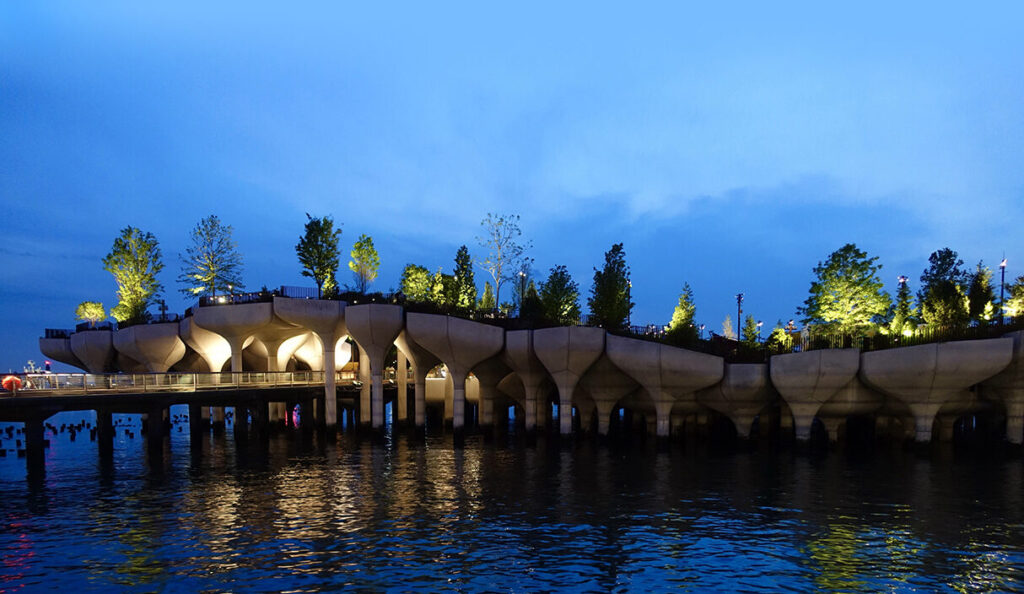
Fisher Marantz Stone (FMS), New York City, devised a lighting plan to create an intimate yet safe environment for after-dark visitors, while also supporting architect Heatherwick Studio’s overall vision for the site. “As an open-air park, lighting design is critical not only to allow keeping it open after dark, but to support the performing arts program, safety and wellbeing, and the subtle and targeted highlighting of its unique structure and landscaping,” says Enrique García Carrera, associate principal at FMS.
Chief among the park’s unique structural features are the 132 concrete, tulip-shaped pot structures that support its elevated topography, as well as the illuminated bridges beneath them, which connect the park to Manhattan. Visible from afar, the giant, glowing tulips softly beckon visitors onto the main bridge through a restored historic archway, now highlighted by concealed striplights (Boca Flasher) located at structural beam flanges. The archway also provides a location for small downlight projectors (Lumascape) that illuminate the surrounding esplanade area, which enabled the team to reduce the number of light poles on the esplanade—a key component of the client’s overarching vision. “Perhaps the biggest individual challenge was providing the illuminance levels required for safety in a way that would satisfy the client’s desire for almost invisible lighting equipment.” García Carrera explains.
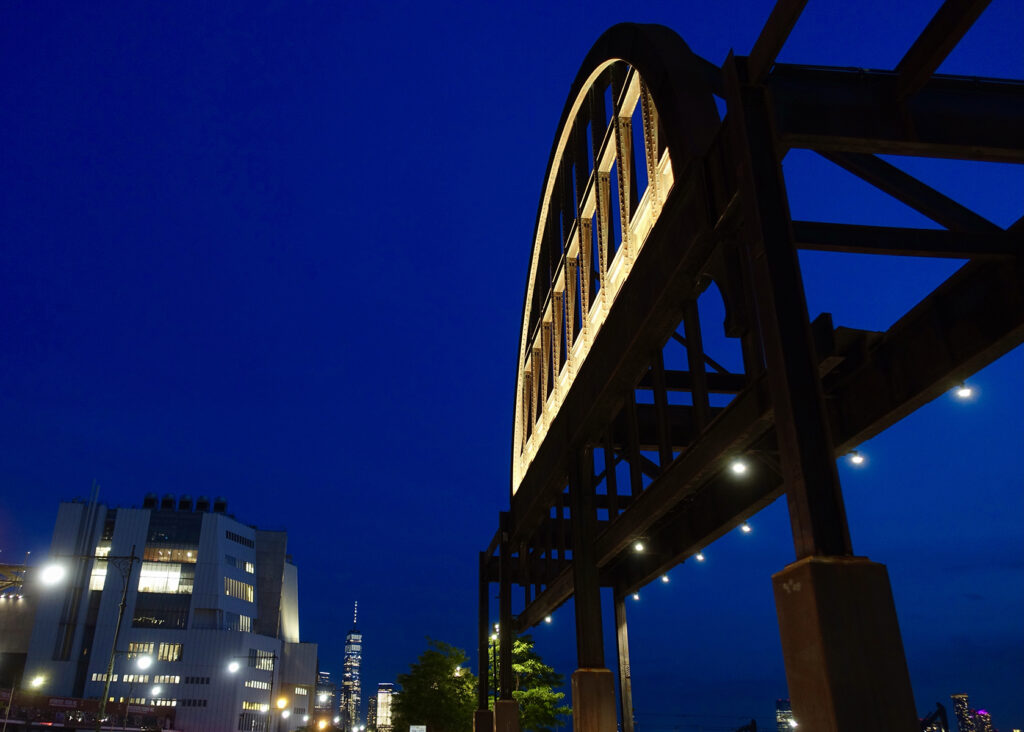
This challenge materialized in various ways across the site, including on the bridges themselves, which are wide due to emergency vehicle access requirements. “Light poles would have been an option to illuminate what is basically a short roadway, but that would have been detrimental to the aesthetic vision of the design team,” García Carrera says. “Instead, we concealed linear light fixtures (i2 Systems) on the underside of the guardrails. While compact enough to fit within the guardrail profile, these fixtures possess sophisticated photometrics that effectively project light forward, allowing us to meet the required light levels for egress.”
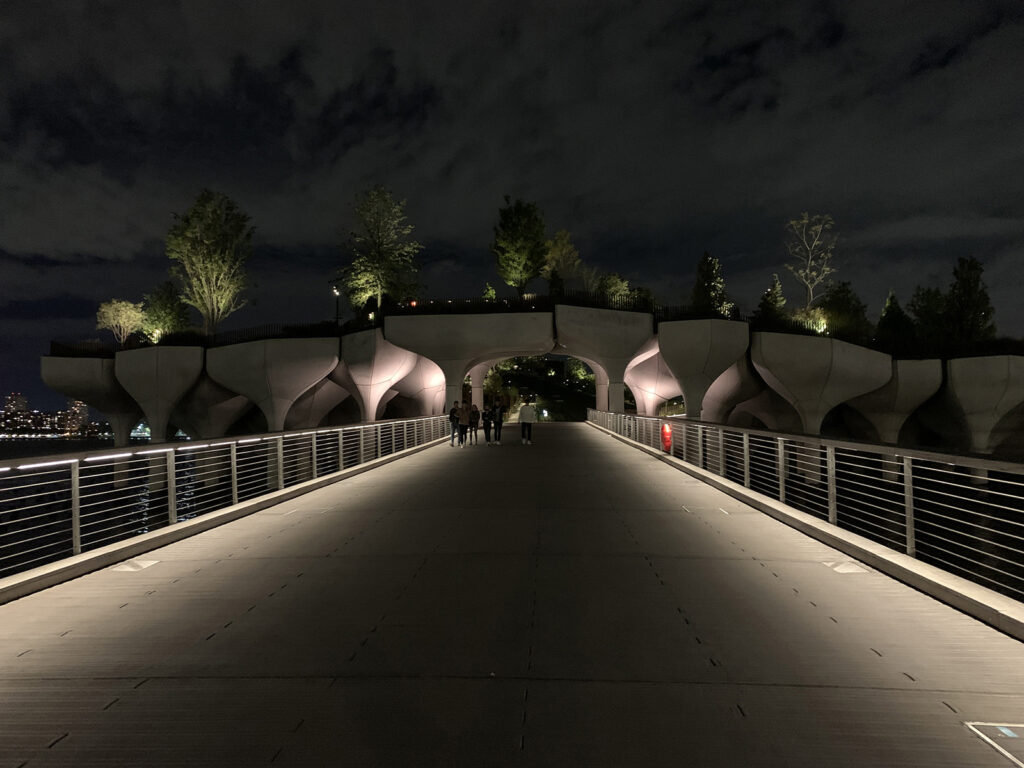
Beyond functionality, bridge illumination hints at the overall hierarchy that the lighting plan affords the site, particularly for guest circulation. “We used continuous, powerful lines of light along the two access bridges, which presented the highest hierarchy—one needs to go through one of these two bridges to enter and exit the park, and they presented the widest circulation path,” García Carrera explains. “Smaller, more inconspicuous points of light (Klik) were integrated into the handrails throughout the park’s many paths and steps, which people may or may not venture on, and are narrower and more intimate than the access bridges.”
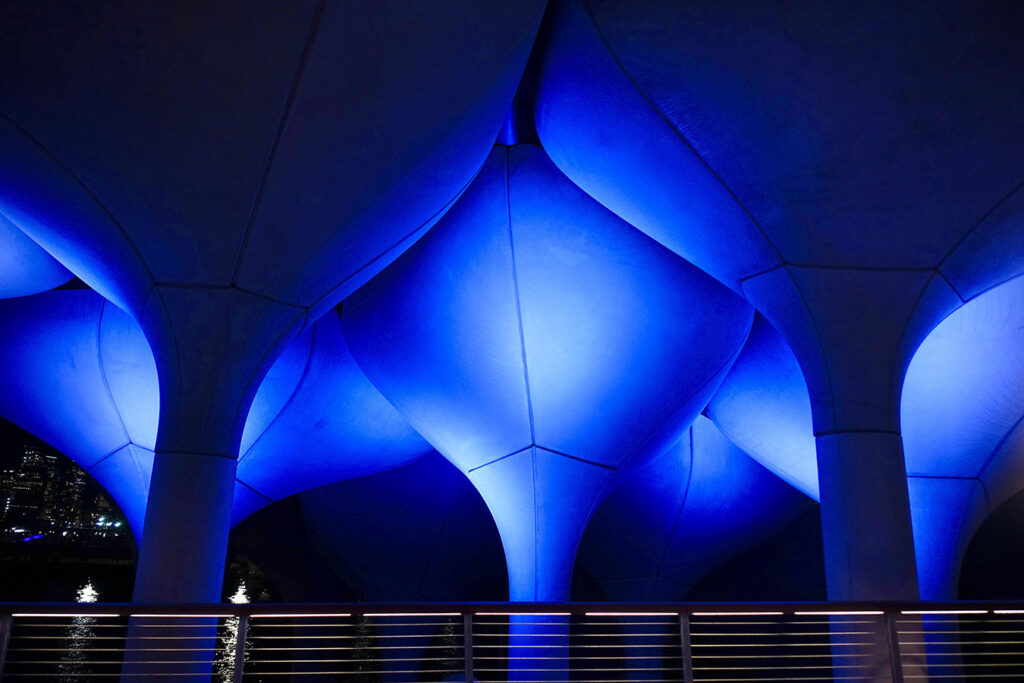
The concrete tulip structures, uplit by concealed shielded linear grazers (Boca Flasher), reflect additional light toward paths and people, aiding in wayfinding. “We identified select tulip structures that should be highlighted for composition and also to assist in bouncing light to paths and thus reduce the number of dedicated path lights required,” García Carrera adds. “An additional criterion was that these tulips would reflect light back towards the park and not outside of the park footprint, toward the river.”
Luminaires are also concealed within rails, behind boulders and plants, and nestled between trees. “These accent fixtures are mounted close to the ground, surrounded by low vegetation to help conceal them, and fitted with deep snoots to control glare,” García Carrera says. Up to three accent fixtures (Lumenpulse) can be mounted to a single custom-designed low mast, and each can be individually aimed.
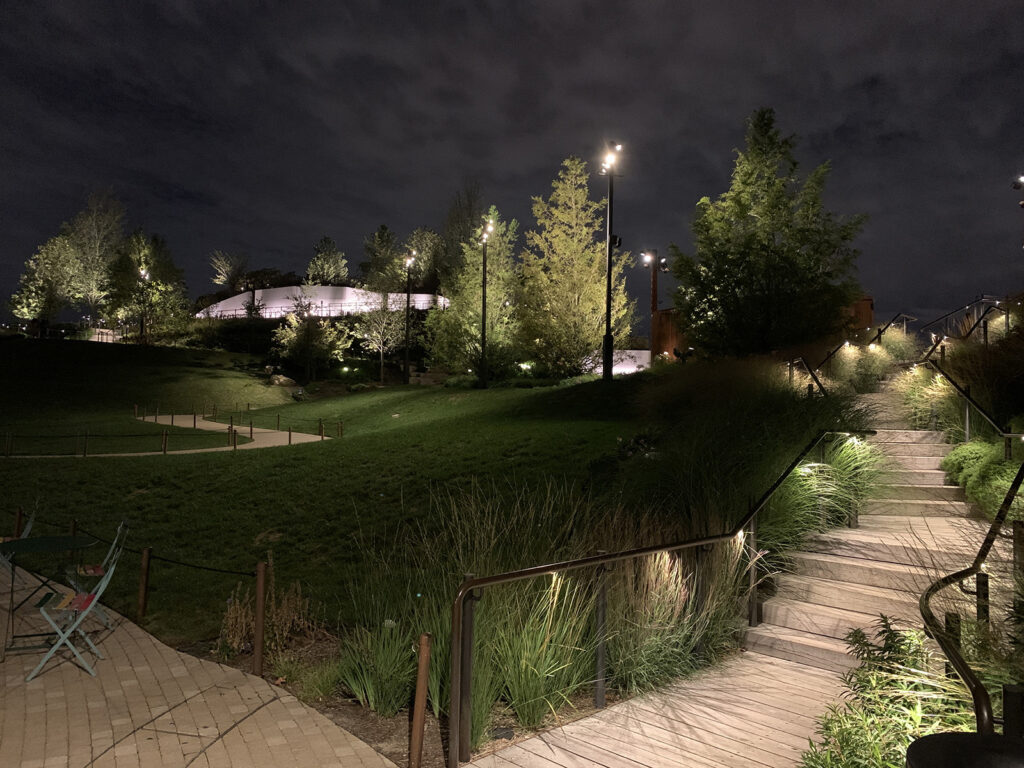
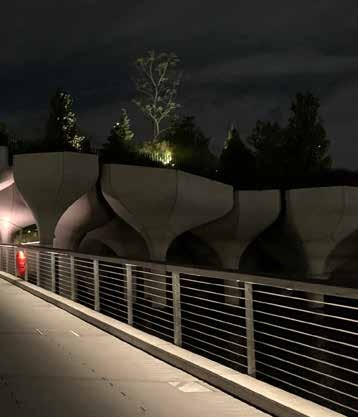
Lighting the park’s largest expanses, on the other hand, could not be achieved via small, concealed lamps. “The client was averse to seeing tall poles with area lights in the park, but achieving the required light levels and uniformity for safety would require them nonetheless. We designed a custom pole that would be as slender as possible with fixture heads as small as possible, and nestled them in between trees [where possible] to further conceal their presence to the public,” García Carrera says. “Most manufacturers we approached did not want to venture into producing this complicated design, but BK Lighting stepped up to the plate and fabricated the pole we designed in various heights and configurations.”
The multiple heads in each pole are zoned separately for landscape accenting and pedestrian circulation, and like the rest of the park illumina- tion, are controlled by an ETC system with a hybrid DMX/0-10-V configuration for robust signal transfer and native dimming protocol at the fixtures. The system helps the project comply with ASHRAE 90.1 2010 and 2014 NYSECC, and enables the lumi- naires to be dimmed to the lowest levels possible (an average 1 footcandle for pathways, ramps and steps), while still providing adequate illumination for safety. The result is anintegrated, immersive art and landscape experience—without any noticeable fixtures blocking the view.
